In this guide, we’ve put together a list of the content marketing trends you should look out for this year and beyond.
Let’s get started.
1. Emphasizing Quality Over Quantity
Consistently producing high-quality content that positions your business as an authority is proving more important than ever. To help you stand out from competitors, build trust with your audience, and achieve your content marketing goals.
The growing prevalence of unedited AI-generated content makes this even truer.
As we learned from a recent algorithm update, Google now prioritizes "helpful, reliable, people-first content" in search.
This means there’s an ever-increasing need for content that solves readers' problems and offers tactical advice.
How can you improve your content’s quality?
Here are a few suggestions:
- Conduct subject matter expert (SME) interviews to learn from those with in-depth experience and collect unique and valuable insights you can’t find elsewhere
- Address and solve your customers’ problems
- Present straightforward instructions and actionable tips
- Focus readability and structure to deliver a great user experience
- Add relatable examples for inspiration
- Maintain a consistent voice
2. Supporting Employees’ Personal Brands
When an employee with an established following shares your company’s content through their personal channels, their followers are likely to engage with it. Making them great ambassadors.
And depending on the nature of their relationships with their followers, they can even encourage action. Like subscribing to your newsletter, signing up for a free trial, or downloading a report.
For example, some of our internal team members posted about our 2024 Rankings Factors Study on LinkedIn:
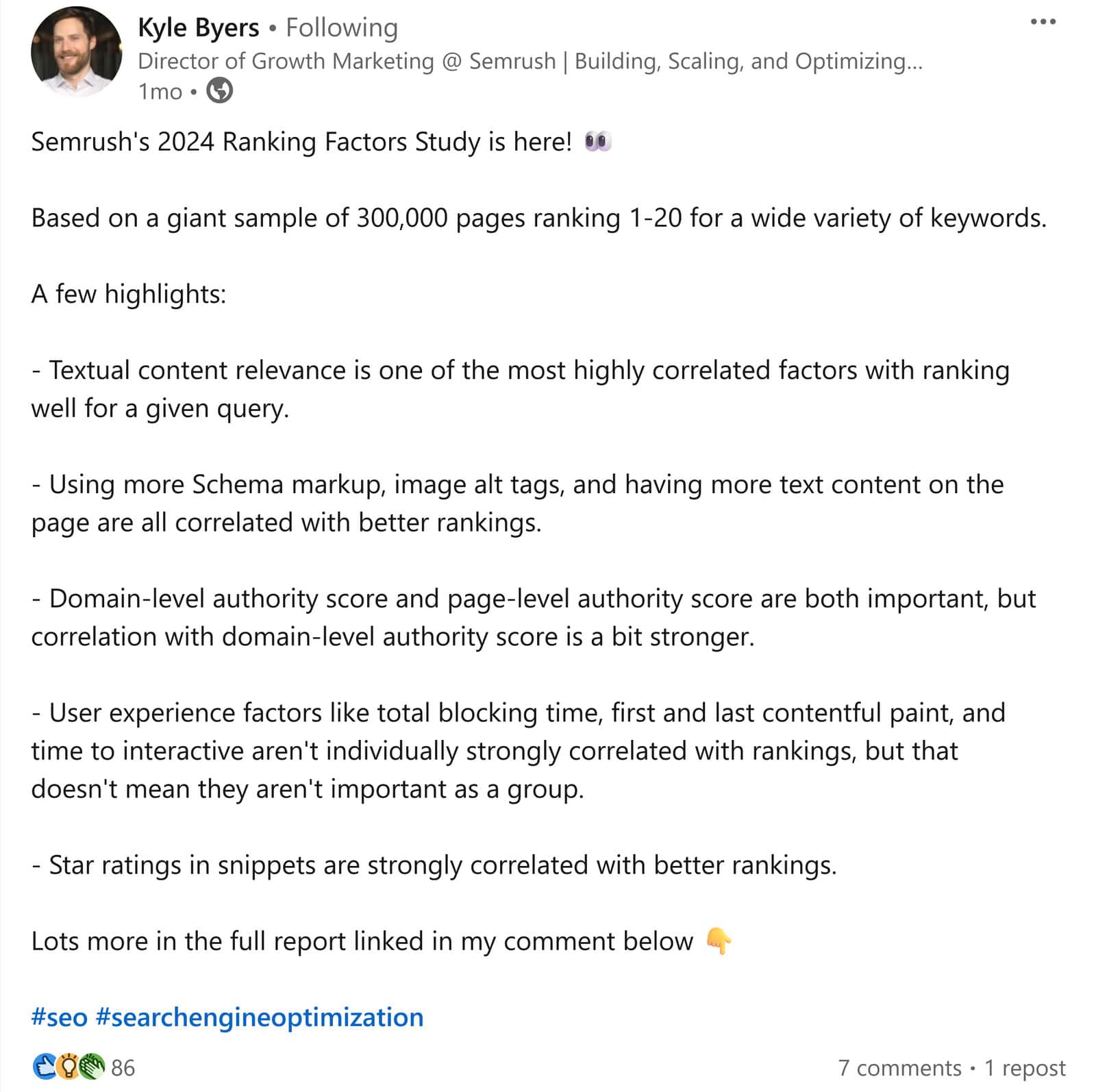
Encouraging employees to build their personal brand may even make them feel more valued and engaged at work.
Here’s how you can encourage your employees to build their personal brands:
- Establish a clear and accessible system for requesting creative assets
- Develop a set of guidelines to help employees understand what kind of company-related content should be shared
- Set aside a budget for paid subscriptions to LinkedIn Premium
- Encourage a company culture where sharing and promoting content is part of the norm
3. Using AI in Content Creation
More companies are likely to use generative AI tools in content production. To save time and money.
In fact, 40% of 1,684 surveyed companies believe their organizations will increase their investment in AI, according to a McKinsey & Company report.
You can use generative AI tools to produce a variety of content formats like blog posts, email newsletters, social media content, etc.
For example, you can use generative AI service Midjourney to produce high-quality images for social media.
Here’s an image generated using Midjourney:

But be wary of publishing AI-generated writing that hasn’t been edited. It can include inaccuracies, veer from your tone of voice, and use language that might not resonate with your audience.
And be sure to infuse the content with your own unique insights and research. Which adds depth and credibility to your content.
Try Semrush’s ContentShake AI to use AI in tandem with your own expertise.
After you enter some information about your business and choose a topic, the tool will create a detailed outline with content you can add to and adjust as needed.
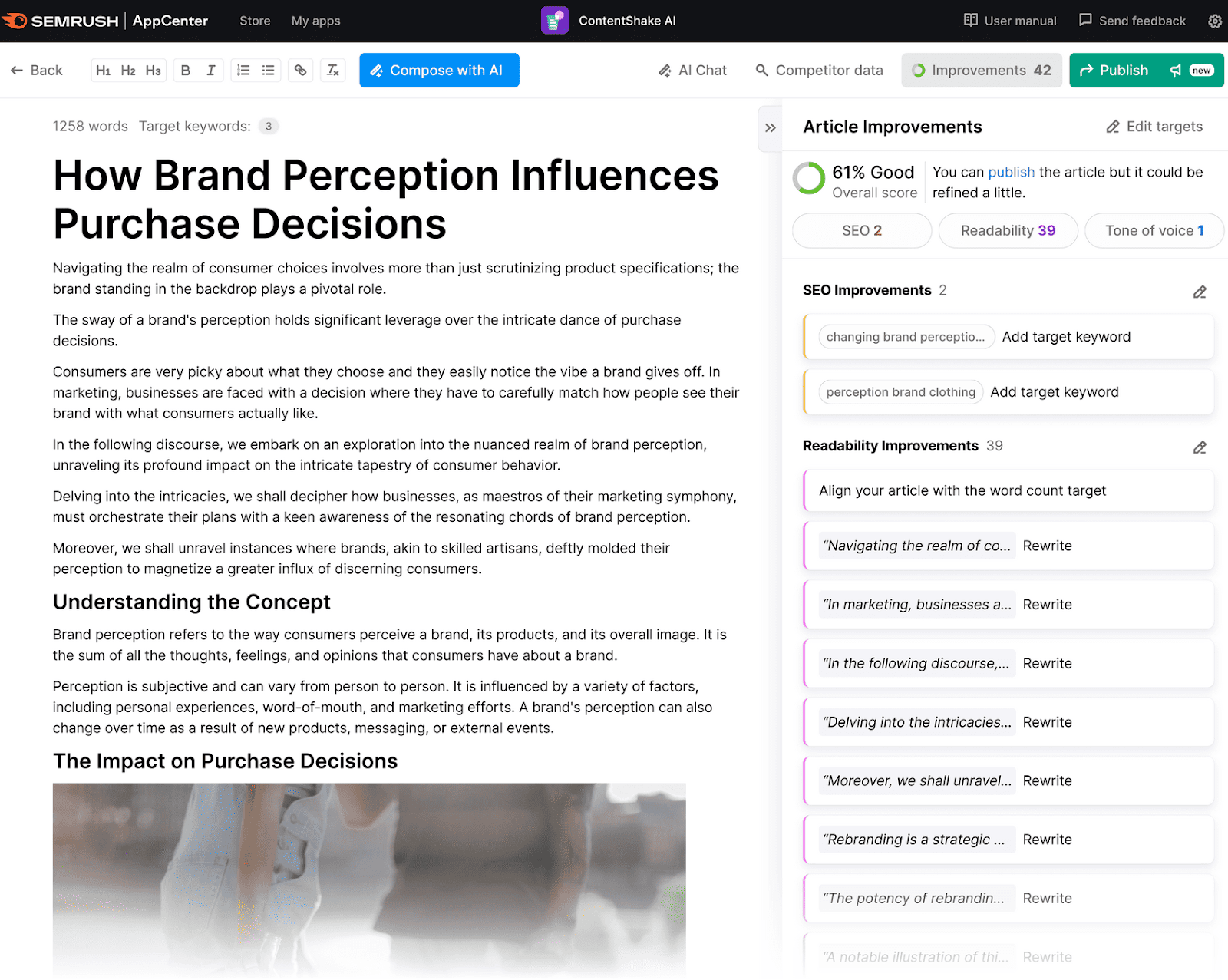
You can also improve the quality of content you get from generative AI tools by working on your prompts. To make them more detailed and specific.
- Bad prompt: “Write an Instagram caption about dog food.”
- Better prompt: "Create an engaging Instagram caption (50-75 words) promoting our organic, grain-free dog food. Highlight its health benefits and appealing taste, encourage pet owners to make the switch, and use a friendly and relatable tone. And include a relevant dog-related hashtag."
The second option provides the much-needed context for generative AI tools to create content that better aligns with what you want to say.
Further reading: 9 Tips for How to Bring AI into Your SEO and Content Strategy
4. Optimizing for Search Generative Experience
Google’s Search Generative Experience (SGE) is an experimental search experience that uses generative AI to offer quick overviews of search topics, so users don’t have to click through to individual webpages.
Businesses are likely to focus on optimizing for SGE. Because that increases the likelihood of appearing as one of the original sources Google links to within these results.
Here’s an example that includes one of those sources on the right-hand side:
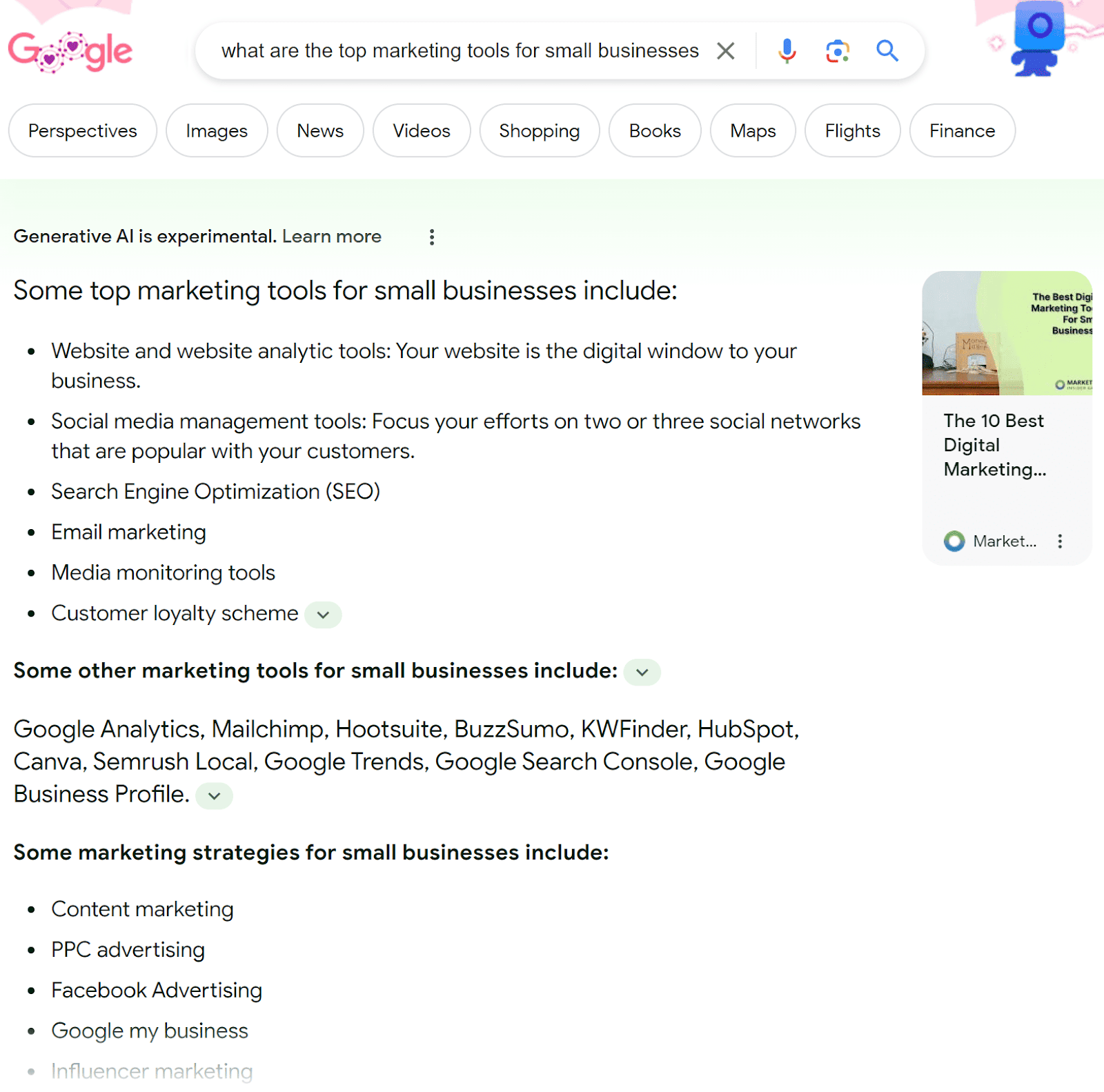
How can you optimize for SGE?
One way is to use long-tail keywords (highly specific search terms) that are proving to be popular in SGE.
To find relevant long-tail keywords, use the Keyword Magic Tool.
Enter a broad keyword related to the topic you want to cover, select a country, and click “Search.”
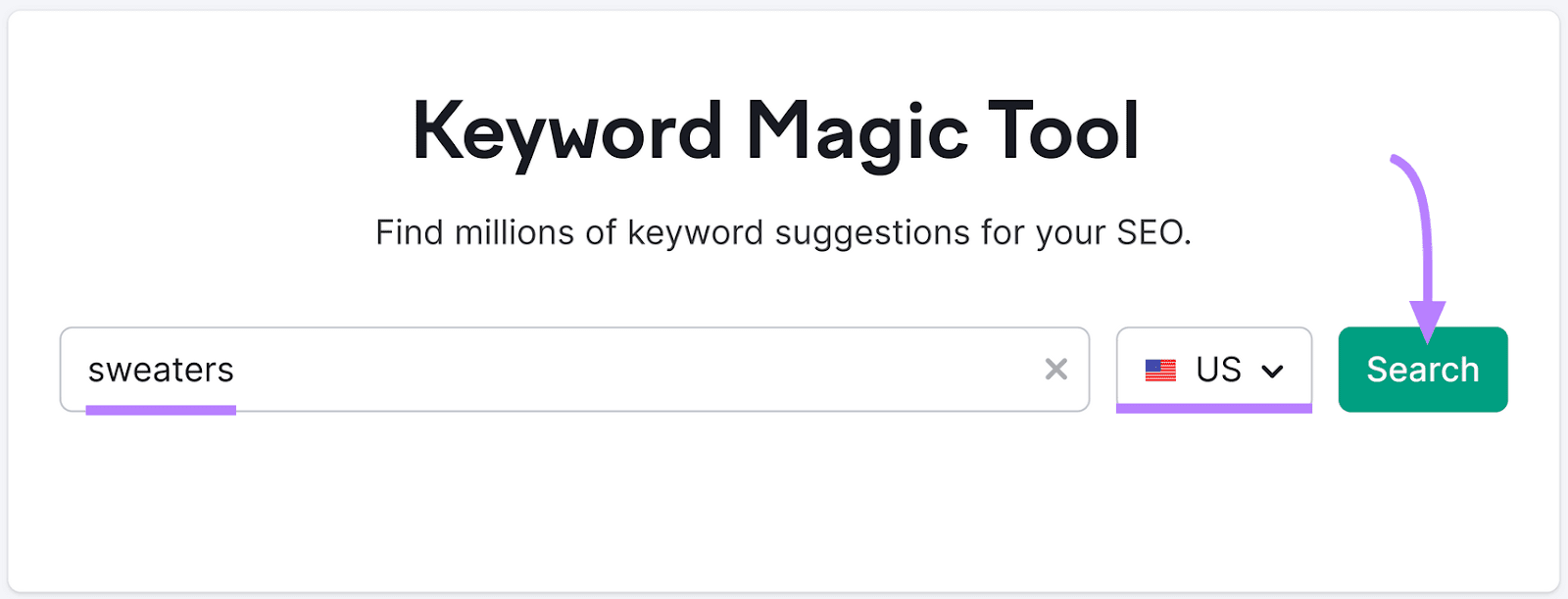
Next, you’ll see an extensive list of related keywords along with their respective metrics.
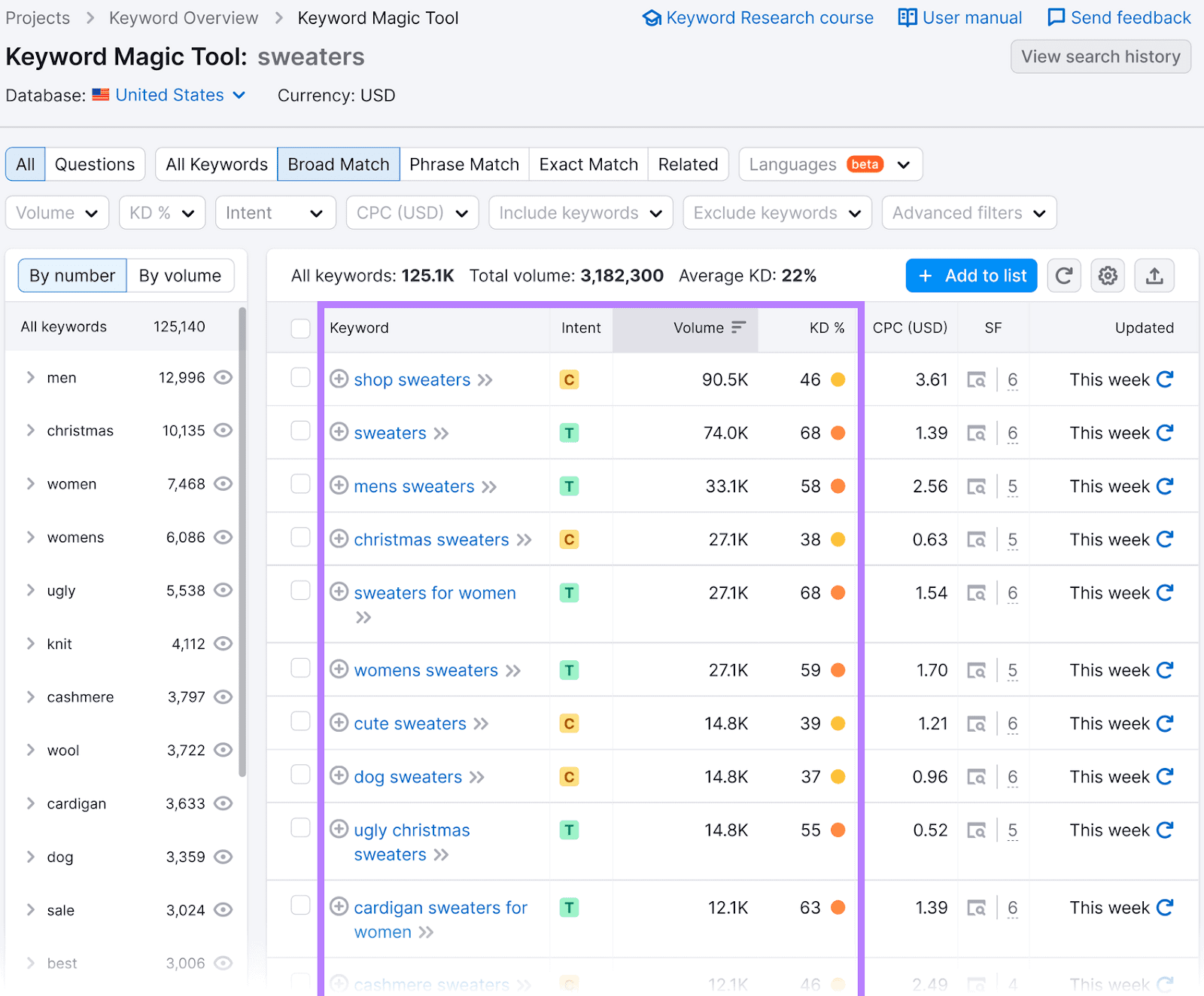
To find long-tail keywords, apply the “Questions” filter. Which will provide you with a list of (mostly) long-tail search terms related to your topic.
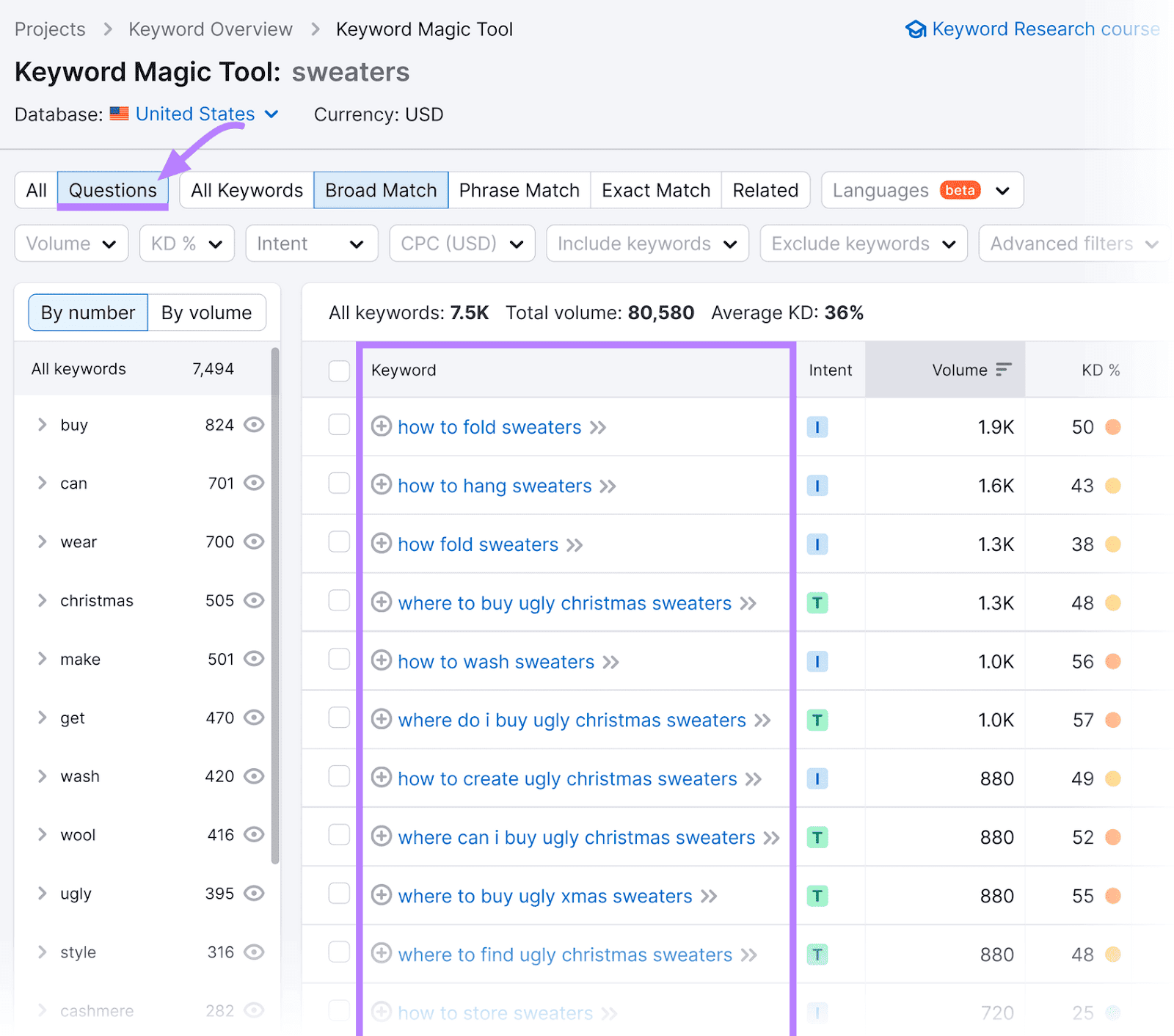
Or, use the suggested groups and subgroups in the left-hand column to filter for terms that are particularly relevant to your niche.
Once you’ve compiled some good long-tail keywords, research the competition. Then, create a better version of what’s already out there.
And be sure to prioritize natural language that sounds similar to how your audience actually speaks.
5. Developing a Podcast
The time people spend listening to podcasts has nearly doubled in the last five years. So, launching a podcast can be an effective way to extend your reach and position your brand as a credible and authoritative source of information in your industry.
To make your podcast successful, produce high-quality, insightful episodes that address and solve your audience’s pain points.
And consider featuring experts from your company or industry who can share their knowledge. This often takes less work than asking them to collaborate on written content as well.
Also, optimize your podcast episodes by including show notes and transcriptions and adding relevant keywords to your titles and descriptions. To help search engines understand what your episodes are about.
For example, check out how the Affiliate Marketing Millionaire has carefully crafted this title and description to clearly convey what the episode focuses on:

If you need to do keyword research for your podcast episodes, use the Keyword Magic Tool.
Finally, choose an appropriate podcast category. Because Google and podcast streaming platforms rely on them to organize and recommend podcasts to users.
Further reading: Podcast SEO: Your Guide to Ranking (+ Successful Examples)
6. Focusing on Video Content
There’s a growing demand for video content—Wyzowl’s 2024 video marketing survey reveals that 89% of customers want to see more videos from brands in 2024.
To meet this demand, content marketers are looking for ways to incorporate videos into their existing marketing strategies.
To find inspiration for your own video content, use Keyword Analytics for YouTube.
Click “Get started” under “Keywords Research” to begin.
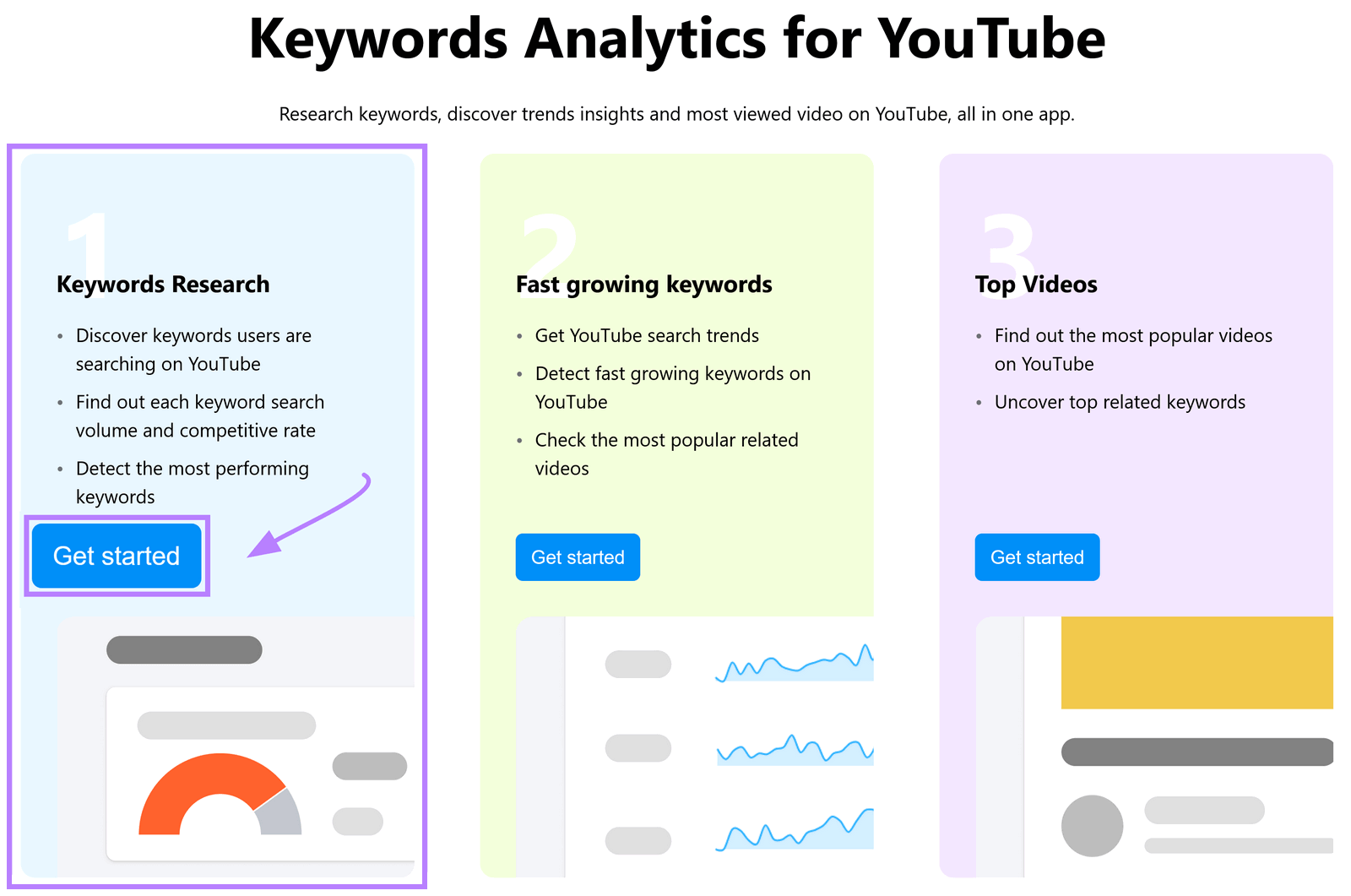
Enter a broad term relevant to your business and click “Search” to see keyword variations and data for each one.
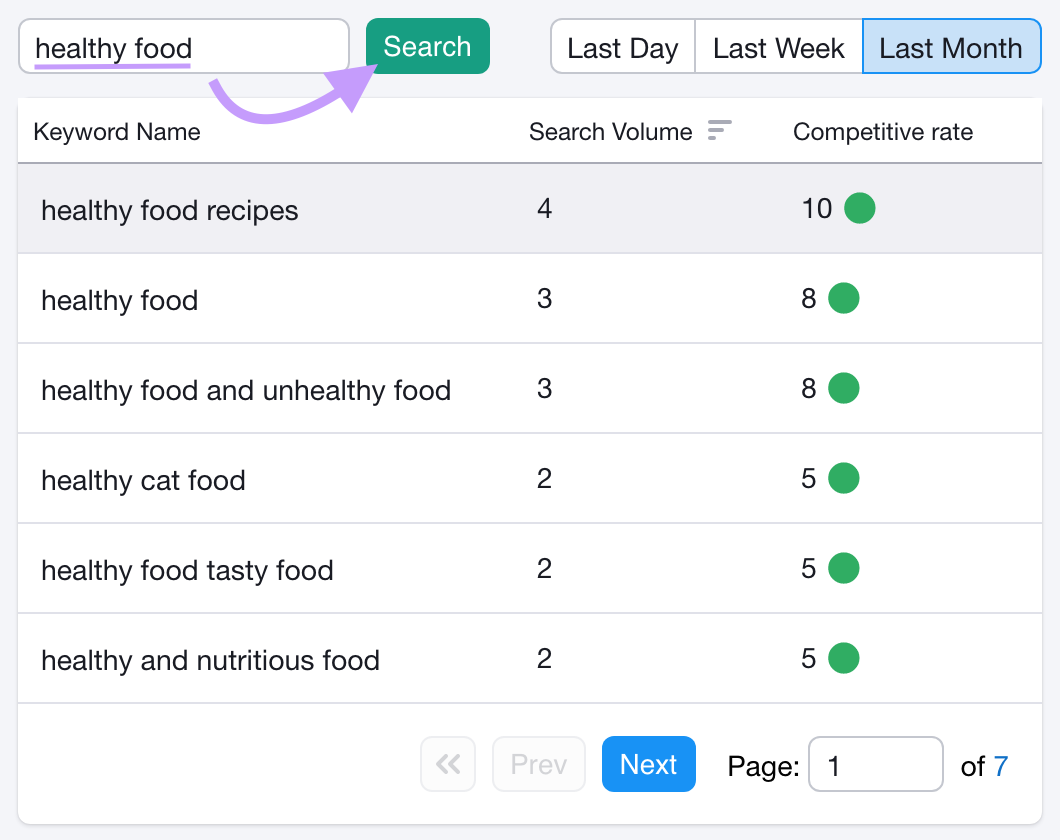
Click on a particularly relevant option to see additional insights. Including related keywords and the top videos.
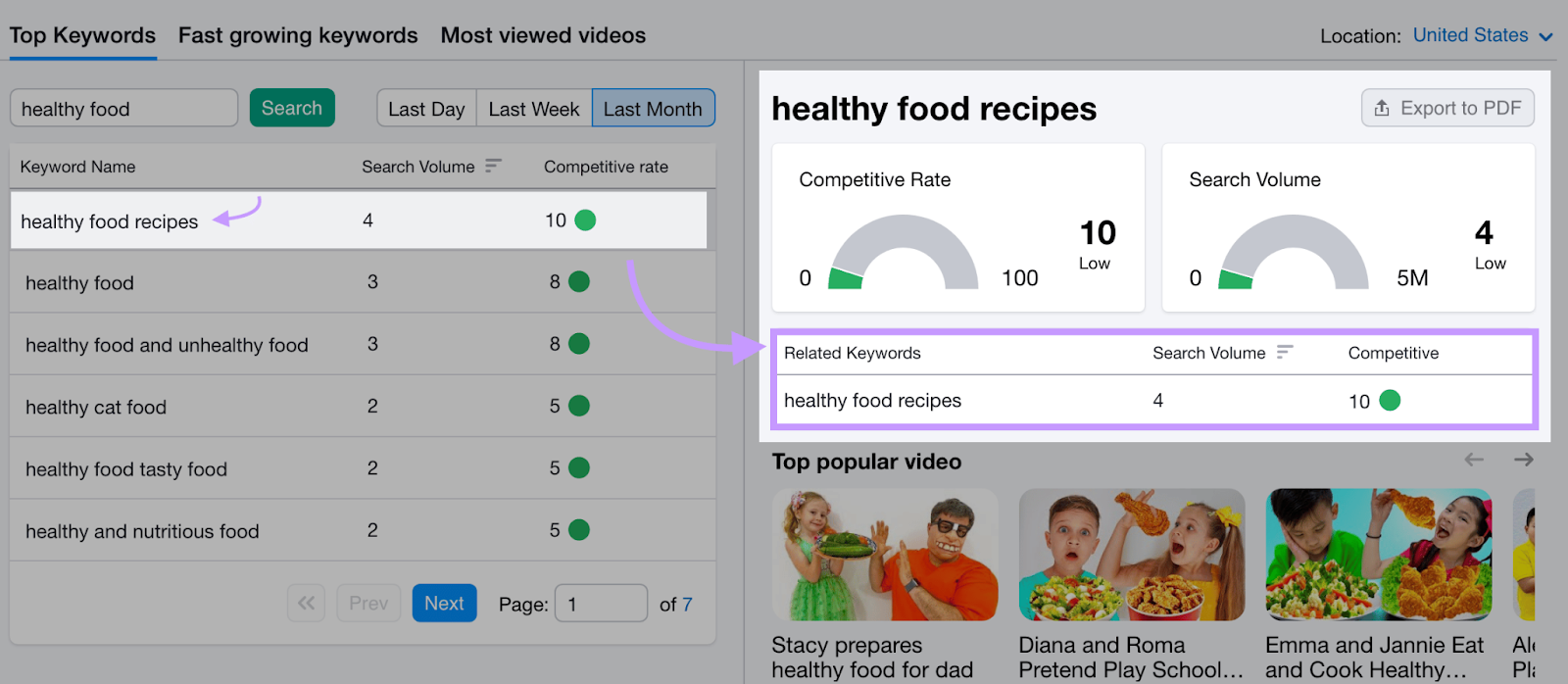
Go through the keywords to compile a list of terms you can target with your own video content.
You also want to make sure your videos reach as many people who fit your target audience as possible.
Here are a few tips to increase the visibility of your videos:
- Include your primary keyword in the video title
- Optimize your video description by using engaging language and including your primary keyword
- Incorporate your target keyword into they video file name
7. Prioritizing Short-Form Video Content
Brands are expected to increase their investment in short-form videos. Because it does a great job of capturing and holding people’s attention.
Wistia’s report on video marketing reveals that the average engagement rate is inversely proportional to video length.
Videos shorter than 60 seconds boast an average engagement rate of 50%. But those exceeding 60 minutes see a significantly lower average engagement rate of just 16%.
To make short-form videos that stand out, here are a few tips to follow:
- Start your video with a strong hook: Grab your audience’s attention by presenting a surprising fact, posing a compelling question, or immediately introducing a problem that your video will solve
- Keep your content focused: Avoid addressing multiple pain points or topics in a single video. Instead, keep your content focused on a single topic or issue.
- Focus on the latest trends: Look for trending topics. Adopting them can increase the chances of your video being seen—as long as they’re relevant to your niche.
8. Experimenting with User-Generated Content
User-generated content (UGC) is any form of promotional content created and shared by a brand’s customers.
More companies are likely to leverage UGC. Because it has a level of authenticity that today’s customers crave.
An Entribe report proves this, revealing that 90% of customers want to see brand content from actual customers. And that 83% of customers are more likely to purchase from a brand that shares real customer content.
Here’s an example of UGC on X (formerly Twitter):
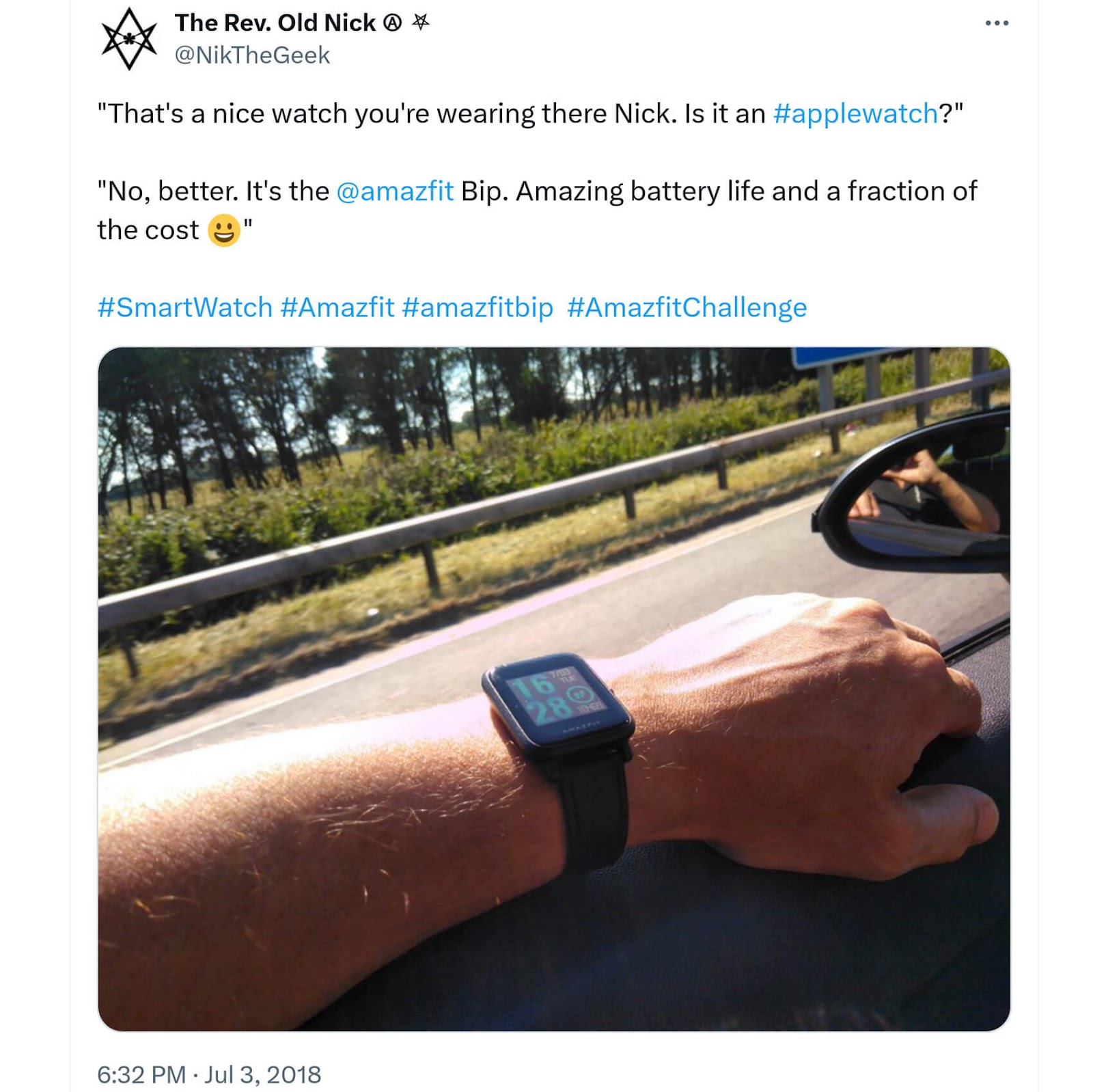
Brands can leverage UGC to increase trust and build credibility among potential customers.
Aside from that, leveraging UGC helps brands:
- Share authentic customer experiences with prospects
- Save money that they might have otherwise spent on professional content creation
- Enhance engagement and interaction on social media platforms
Here are a few ideas about how to leverage UGC:
- Share it on your social media channels
- Display it on your website
- Feature it in your newsletters
- Create paid ads featuring UGC
Level up Your Content Marketing Efforts
Spotting and adopting new trends in content marketing early on can help you run innovative marketing campaigns your customers haven’t seen before. So you can stay ahead of your competitors and reach more potential customers.
That’s easier to do when you can quickly gather data and implement new tactics.
Semrush has more than 55 tools to help you do just that. Sign up for a free trial today.
